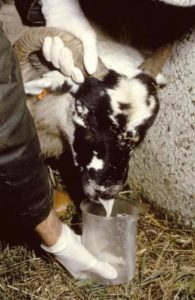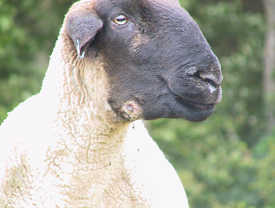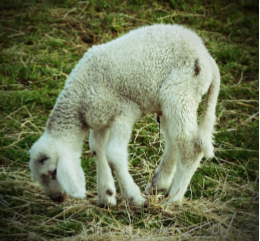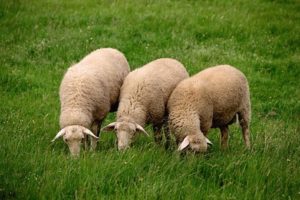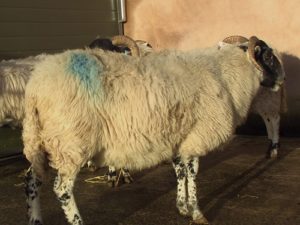Iceberg Diseases In Sheep
The phrase “Ice-berg Diseases” refers to a collection of chronic, infectious conditions which affect sheep. These diseases are so named due to the fact that for every visibly affected animal, there will be numerous other infected animals within the flock carrying the disease whilst only displaying sub clinical symptoms. Therefore, visibly affected animals generally only represent the “tip of the ice-berg”.
As a result, it can often take some time before farmers become aware that they have an issue with these diseases within their flock. These conditions are a major source of economic loss for farmers, reducing both animal health, productivity and performance.
There are five main Ice-berg Diseases which affect UK farmers and these are – Borders Disease; Contagious Lymphadenitis; Ovine Johnes Disease; Maedi Visna and Ovine Pulmonary Adenocarcinoma.
Therefore a selection of useful videos and factsheets have been created to help inform farmers of these conditions, key clinical signs to look out for and the impact they may have on a flock. These guides also provide farmers with information on how to test your flock and/or treat any affected individuals.
Videos
Ovine Pulmonary Adenocarcinoma
Caseous Lymphadenitis
Border Disease
Maedi Visna
Johne's Disease
Fact Sheets
Case Study: The Mitchell Family, Hawick
The Mitchell family farm approximately 1050 acres across Whitriggs and Denholm Hill farms. This family run business acted as the Borders Monitor Farm for QMS Scotland from 2016-19. Prior to becoming a monitor farm, the family had little knowledge of iceberg diseases. In 2016, at the start of the project the farm had 1000 Llyen ewes which had been a closed flock since 2001. Read more>>
Case Study: Sion Williams, Bowhill Estate
Sion Williams, farm manager at Bowhill Farming, is forward thinking and has developed a plan for if an iceberg disease is found in the flock to minimise its spread throughout all 7000 ewes and react quickly to the problem. Read more>>
Ovine Pulmonary Adenocarcinoma
Ovine Pulmonary Adenocarcinoma (OPA) was first detected within the UK in 1888. Often referred to as “Jaagsiekte” it is caused by a retrovirus. This virus infects the lungs of sheep, causing tumours to develop and fluid to accumulate within the airways. OPA is a huge source of economic loss for farmers, with initial losses as high as 20-25% - reducing to 1-5% in endemic flocks. At present, there is no commercially available test or vaccine for OPA. Read more>>
Caseous Lymphadentis
Caseous Lymphadenitis (CLA) was first detected in UK sheep during 1987 following the importation of infected goats from Germany. Caused by the bacterium “Corynebacterium pseudotuberculosis” this is a chronic disease often characterised by the formation of abscesses within the lymph nodes and/or internal organs of infected animals. CLA infection has the ability to increase levels of chronic mastitis within a flock, significantly reducing the performance and milk yield of ewes – shortening their productive lifespan. At present, there is no commercially available vaccine for CLA within the UK – however, flocks and individuals can be tested to establish whether CLA is present. Read more>>
Border Disease
Border Disease (BD) was initially identified in the UK during 1959. Often referred to as “hairy shaker disease”, Border Disease is caused by a pestivirus very similar to the one which causes Bovine Viral Diarrhoea (BVD) in cattle. Border Disease has the ability to increase the proportion of barren ewes within a flock by 2-8% per year, with infected lambs growing on average 20% slower than uninfected lambs throughout the first six weeks of life. At present, there is no commercially available vaccine for BD within the UK – however, suspect animals can be tested for the virus. Read more>>
Maedi Visna
Maedi Visna (MV) was first detected in Icelandic sheep flocks during 1954, before being introduced to the UK following the importation of infected sheep. MV is caused by a retrovirus and is capable of having devastating effects on a flock, significantly reducing fertility and productivity. MV is a chronic wasting disorder, which is increasing in prevalence across UK flocks (recently doubling from 1.4-2.8%). MV is ultimately a fatal condition, for which there is no vaccine available. Flocks can be blood sampled to test for infection. Read more>>
Ovine Johne's Disease
Ovine Johne’s Disease (OJD) was first described in 1985. OJD is a condition caused by the bacterium “Mycobacterium avium spp. Paratuberculosis” (MAP). Johne’s is a condition which affects all ruminants, although not in the same way. OJD is a chronic condition which is responsible for causing a reduction in productivity, immunity and fertility. Research by the University of Glasgow also indicates that mortality rates are significantly higher (4-12%) within infected flocks in comparison to healthy flocks (1-2%). There is no perfect test to diagnose Johne’s in a live animal – however, a licenced vaccine is available in the UK which can reduce both the severity of clinical signs and subsequent mortality rate. Read more>>
Sign up to the FAS newsletter
Receive updates on news, events and publications from Scotland’s Farm Advisory Service



